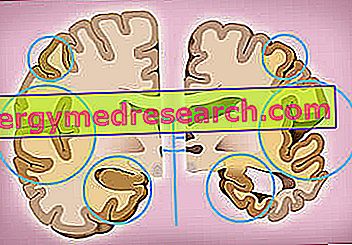Definition
In the medical field, we talk about hypoglycemia when blood glucose levels fall below the norm (<70 mg / dl). Hypoglycemia must be considered a rather alarming pathological condition, since it could interfere with certain brain functions and with the release of certain hormones (especially epinephrine and norepinephrine).
Causes
Hypoglycaemia is a common condition in patients with diabetes who take insulin: the decrease in blood sugar may depend on an excessively high dosage of insulin, but also on an unbalanced and carbohydrate-deficient diet, or on a prolonged fasting state.
- In addition to diabetes, there are also other diseases implicated in the onset of hypoglycemia: aspirin abuse, some antibiotics (gatifloxacin and levofloxacin), alcoholism, pancreatic cancer (insulinoma) and liver cancer, growth hormone / cortisol deficiency, defect of the enzyme glucose-6-phosphatase, hepatopathies.
Symptoms
Although often vague and nuanced, the symptoms that accompany hypoglycemia can be dangerous: headache, convulsions, difficulty concentrating, intense hunger, blurred vision, palpitations, sialorrhea, neurological symptoms, tremors; in the most severe cases, hypoglycaemia can lead to hypoglycemic coma (blood glucose <20mg / dl).
Diet
Information on Hypoglycemia - Hypoglycemic Drugs is not intended to replace the direct relationship between health professional and patient. Always consult your doctor and / or specialist before taking Hypoglycaemia - Hypoglycemia Drugs.
drugs
Hypoglycaemia must be considered a possible danger for diabetes patients taking insulin; in fact, due to an incorrect and excessive administration of insulin or oral hypoglycemic agents, the chances of hypoglycemia increase exponentially.
Furthermore, it is good to remember that in diabetic patients treated with insulin there is a reduction in the ability to recognize the symptoms that accompany hypoglycemia: what has been said involves an alarming risk, especially when the patient carries out work that can endanger the lives of others ( eg bricklayer, driver etc.).
General guidelines to reduce the risk of hypoglycemia in diabetic patients on insulin therapy:
- Modulate the dosage of insulin
- Opt for more adequate insulin
- Change the frequency of insulin administration
- Pay attention to the duration of the meal and the quantity of food taken
- Avoid too frequent snacks
In general, the treatment of hypoglycemia should begin with an increase in the level of glucose in the blood, and continue with the treatment of the disease which, eventually, arises at the origin. To increase blood sugar, it is recommended to consume foods rich in sugars, such as candies, honey and fruit juices, but also carbohydrates with a medium glycemic index to avoid subsequent episodes of reactive hypoglycemia; if this were not enough, it is possible to resort to intravenous administration of glucose or glucagon.
If hypoglycemia is associated with more serious diseases (eg tumors), it is essential to treat the underlying pathology, either through drugs or surgery.
- Diazoxide (eg Proglicem): the drug is a vasodilator indicated for the treatment of hypoglycemia associated with pancreatic cancer; in other words, the active ingredient is used in therapy for the treatment of patients with chronic hypoglycemia (hyper-production of endogenous insulin). It is not indicated to treat occasional attacks of hypoglycemia. The drug should be taken orally, at a dose of 5mg / kg per day, possibly divided into 2-3 doses. The drug is also used in therapy for the treatment of hypertensive crises. The dosage increases to 100-200 mg, 2-3 times a day, for patients with insulinoma-dependent hypoglycemia that cannot be surgically removed.
In order to avoid water retention, a typical side effect derived from the administration of diazoxide, it is recommended to take diuretics
- Glucagon (eg Glucagen Hypokit, Glucagen): through muscle injection, glucagon is indicated to treat severe hypoglycemia; the drug is particularly appropriate for unconscious diabetic patients treated with insulin, in the context of a hypoglycemic crisis. For patients with hypoglycemia that weigh less than 20 kg, it is recommended to take a dose of 0.5 mg, subcutaneously, intramuscularly or intravenously. For hypoglycemia patients who weigh over 20 kilos, the indicative dose is 1 mg.
NB Glucagon is a hormone synthesized by the pancreatic alpha cell; its function is to increase the glycaemia through a mobilization of hepatic glycogen, therefore it is indicated for the treatment of hypoglycemia.
- Glucose (eg Gluc33% GSE, Gluc50% MNC, Gluphos): in general, in the first hypoglycemic stage, it is recommended to take sugar, in the form of lumps or granules (10-20 grams, equivalent to 3 lumps). The next meal should be rich in carbohydrates to prevent a further hypoglycemic episode. Alternatively, administration of intravenous glucose (at a dose of 25 ml - 50% glucose solution - or 50 ml - 20% glucose solution -) is indicated to treat hypoglycemic seizures.



